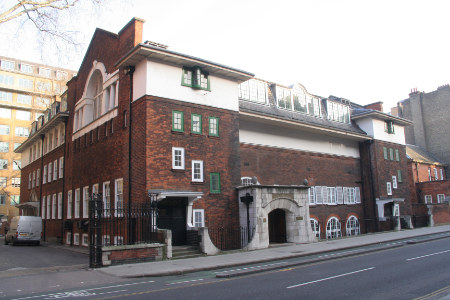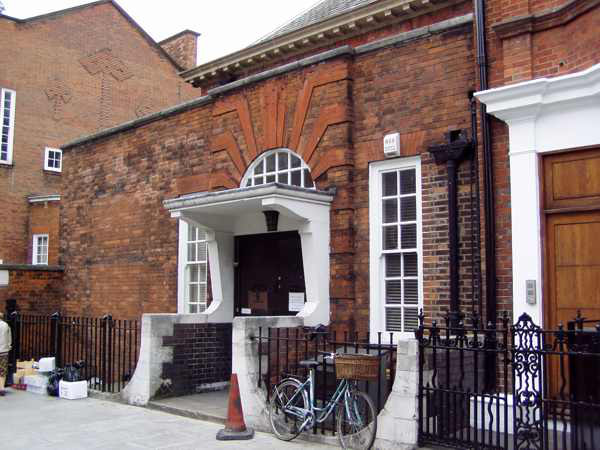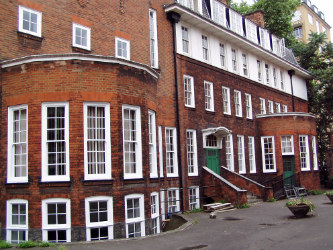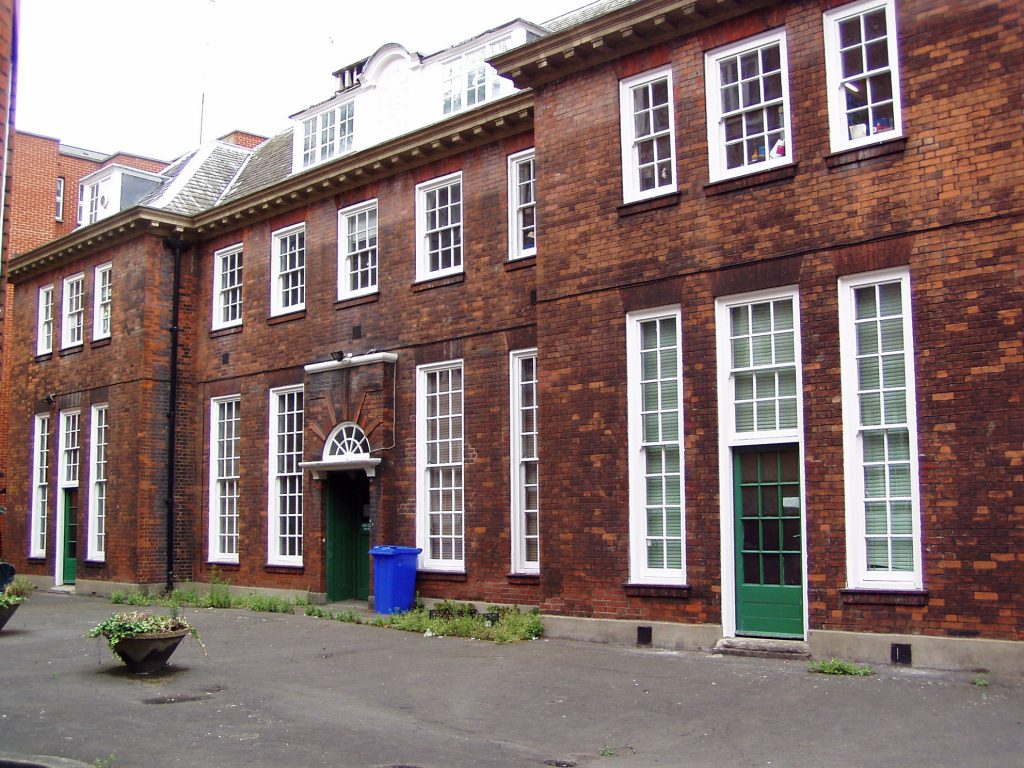The Mary Ward Settlement, designed in 1895, marks an inspired moment in British arcitecture…. The settlement is also a wonderful example of a social ideal being expressed in architecture. Adrian Forty writing in The Architects’ Journal, 2 August 1989
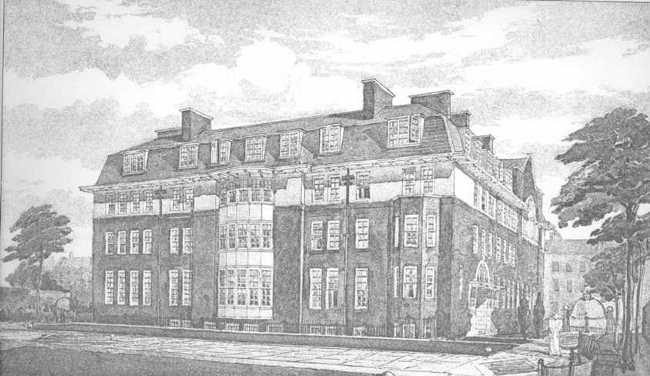
History
Towards the latter part of the 19th century “Carlyle, Meredith, William Morris, Tennyson, Mathew Arnold and a host of other profound intellects were all alike alive to the troubles and injustices of the time. Oxford men and others inspired mainly by the philosophy of T H Green were starting the Settlement movement. Not unnaturally these minds began to query the validity of the hitherto accepted creeds. The distortion of social tradition was called into question. How far was wealth providing benefit to the community? How far was the religion of that time expressed so as to meet the needs of a submerged people? Perhaps no book caused greater discussion on the later subject than Mrs Humprey Ward’s three volumes of “Robert Elsmere”. This book was eagerly bought and read by thousands and thousands; for the authoress had well read the significant symptoms of spiritual unrest in the country.” (History of the Mary Ward settlement 1891-1931- John Rodgers).
Mary Humprey Ward, wife of an Oxford Don and grand daughter of Thomas Arnold, headmaster of Rugby School, was a woman of actions as well as ideals. She had already established a settlement at University Hall, London in 1891 and this success inspired her to seek funding for a purpose built centre. Amongst those that she approached was Passmore Edwards although he, at first, offered little more than encouragement saying that he “had his hands full at present and was thus unable to help”. He was, however, soon to be persuaded and within 2 months he had promised to support her proposals.
In March 1895 he wrote “You are quite at liberty to pledge me to the extent of £7,000 and if you insist in calling it the Passmore Edwards Settlement then I must insist on increasing my donation to £10,000”.
In the next few years he was to support her not only by sums of money totalling over £12,000 but readily gave her advice on who else to approach and took a close interest in the details of the site chosen and the proposed contractual arrangements with the landowner, the Duke of Bedford.
The chosen site was in Tavistock Place and a competition for its design was held and won by two young architects who had been residents at the University Hall Settlement, Dunbar Smith and Cecil Brewer. Both in their mid 20’s this was their first major project and yet is a major architectural achievement. A contemporary account of the Settlement building can be found here. (Source unknown).
The Settlement was an immediate success, attracting ordinary local people who paid the few pence annual membership fee and took advantage of the settlements facilities. They could learn practical skills, attend concerts, or use the gymnasium, and join the many groups, such as the coal club or boot club, as well as take advantage of the Poor man’s lawyer – free legal assistance given by the lawyers that were amongst the Settlements residents.
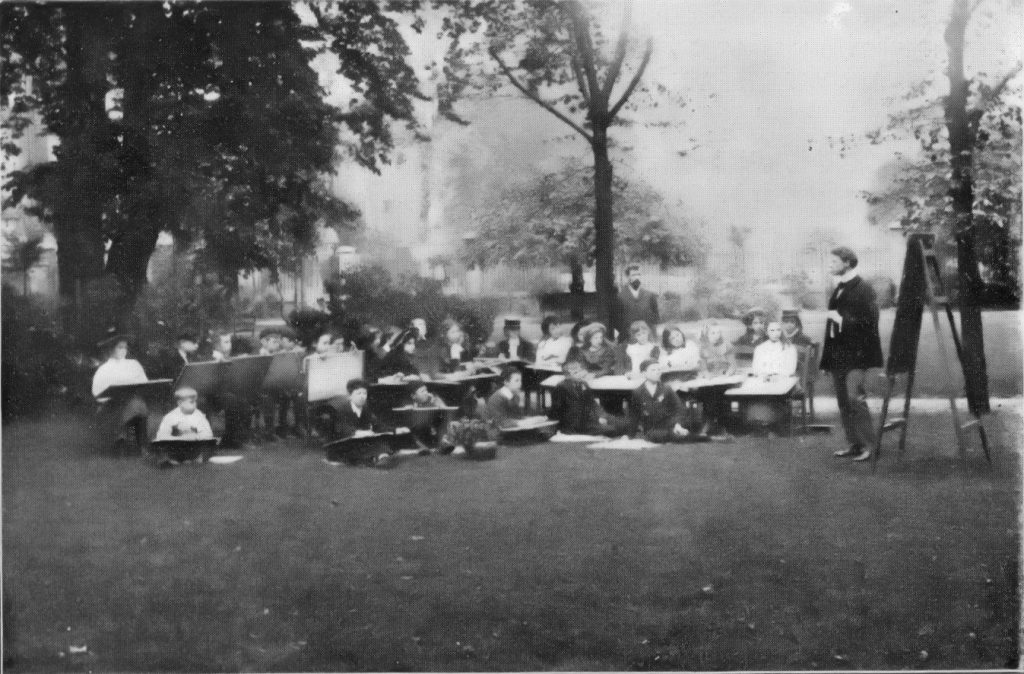
art classes 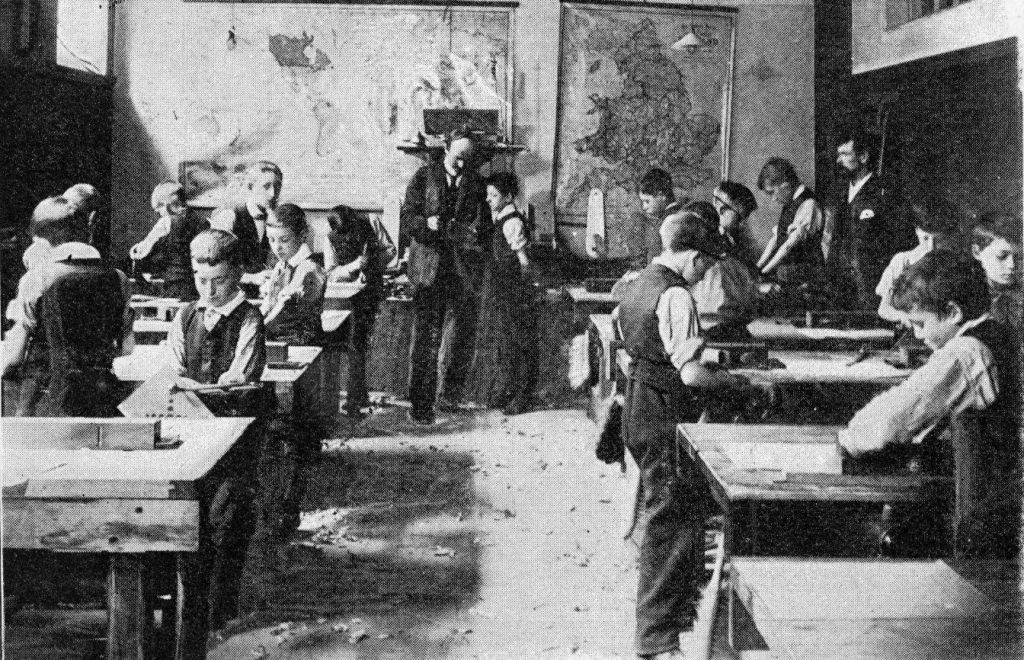
woodwork class
Music was an important part of the Settlement, Gustav Holst was Musical Director for a while, and Edwards contributed, as reports of the Passmore Edwards Prize Choir, a ladies choir performing at Claremont Hall, Pentonville shows.
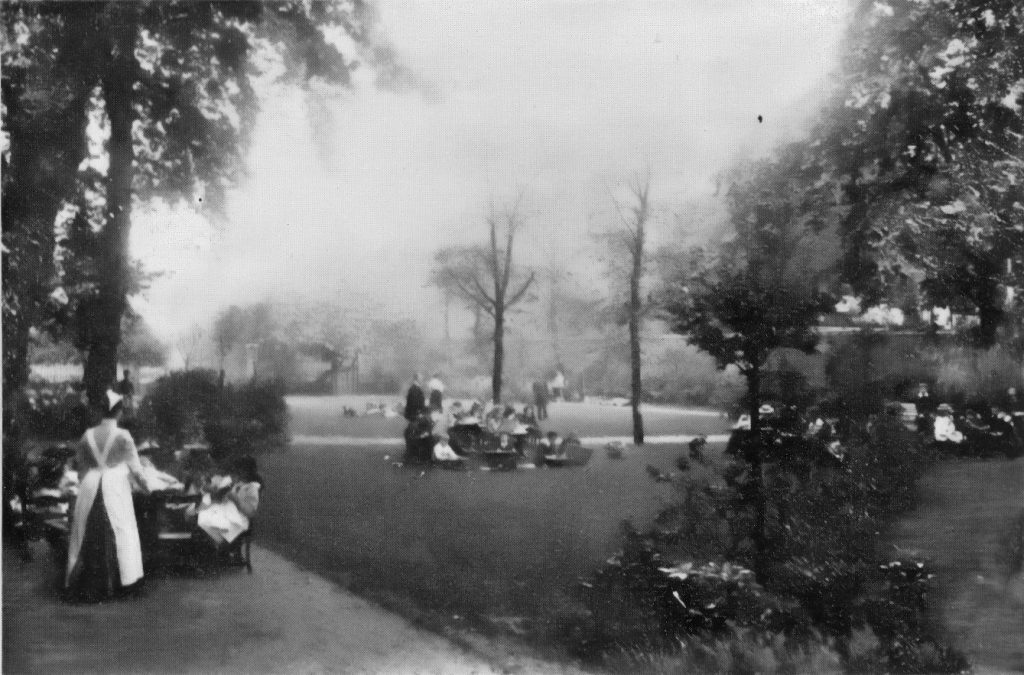
the gardens 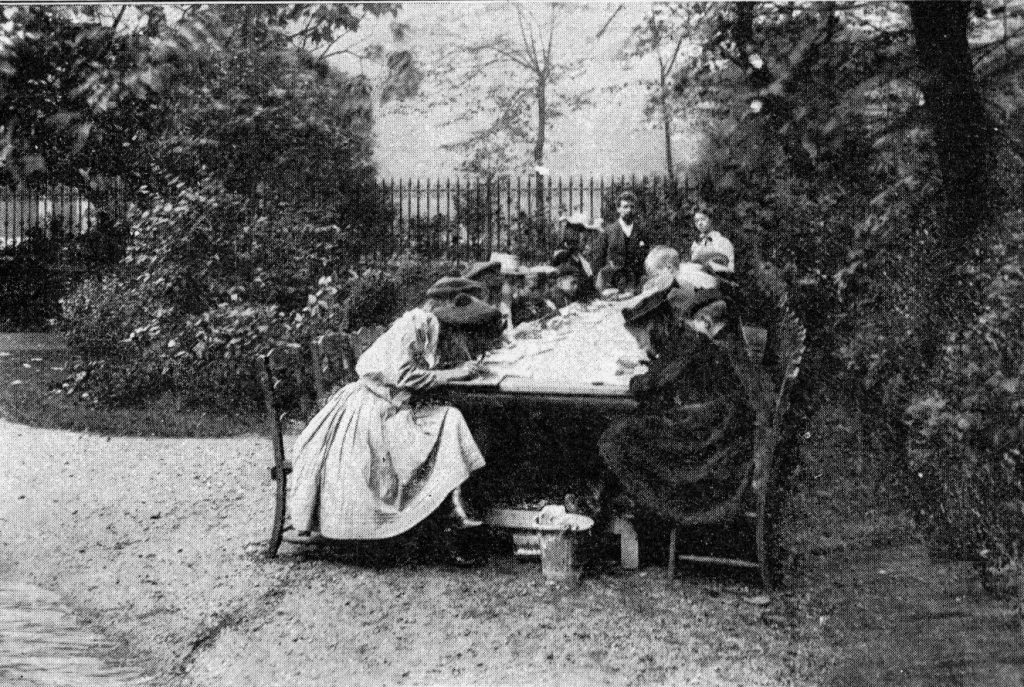
pottery class
The Settlement was also a centre for debate with George Bernard Shaw and Kier Hardie amongst the lecturers and the Jowett Lectures becoming a regular feature. The Settlement was also a firm favourite with Edwards, who was often to be found amongst both the contributors and the audience and he chose the Settlement to receive seven of the memorial busts he commissioned.
Invalid Children’s School and Summer Vacation Schools
The Settlement’s mother and toddlers club was the start of the Play Centre movement and in 1899 Ward opened the first school for physically handicapped children, again with the help of Passmore Edwards. This was the first such school to be formed in the UK and possibly in the world. His initial response was to offer only £10 a year towards the required £100 a year but in spite of his’ reluctance to contribute the Invalid Children’s School opened the following year and was an instant success. So much so that plans were made to build an annex adjacent to the Settlement, at 9 Tavistock Place, with Edwards providing £1,000 towards the cost. In its new home the school was endowed by the London School Board, who supplied trained teachers for the classes, whilst the Settlement provided classrooms, nurses to look after the children and mid day meals. The School was so successful that the School Board resolved to start four other schools in different parts of London and by 1903 Schools for the “Physically Defective” had been adopted into the National School system.
In 1902, the first Vacation School in England was held at the Settlement, for London children otherwise left to roam the streets during the school holidays. Passmore Edwards would regularly include a cheque of £20 or £25 towards the Vacation Schools or “£5 for the Girls Seaside Holiday Fund”.
After the death of Mary Ward, in 1921, and with the agreement of the Passmore Edwards family, the centre was renamed the Mary Ward Settlement and in 1970 the Mary Ward Centre. Though the success of the Settlement rests firmly with the inspiration and hard work of Mary Ward, Passmore Edwards’ contribution was no less significant.
The Mary Ward Centre continues to thrive, but, alas, not in Tavistock Place. During the 1930s the Management Council considered moving the Settlement to Islington, where some considered there was more work to be done than in Bloomsbury, and the lease was sold back to the Bedford Estate to kick start an appeal and plans drawn up for a new building. With war, on the horizon the move did not take place and the Estate allowed the Settlement to remain on a 6-month lease. This situation continued until 1959 when, to offset death duties, the Estate sold the property for redevelopment.
Though immediate action to get the building listed put paid to the redevelopment plans it did not stop the Estate from wanting to sell the buildings. An appeal by the Settlement Council brought only a substantial positive response from the Nuffield Foundation and Joseph Rowntree Trust, who were looking for a headquarters for the newly formed National Institute for Social Work Training. By now the LCC had closed the Physically Handicapped School and the Settlement’s Council was offered the annex in which to continue their work, on a 5-year renewable lease.
In 1982, no longer able to afford the rent the Settlement finally moved to Queens Square where it remains today providing a wide range of courses; its aims, as they were in 1897 –‘To promote public education and social service for the benefit of the community’.
The National Institute for Social Work Training has also vacated Tavistock Place and it is now a privately owned conference centre, known as Mary Ward House.
